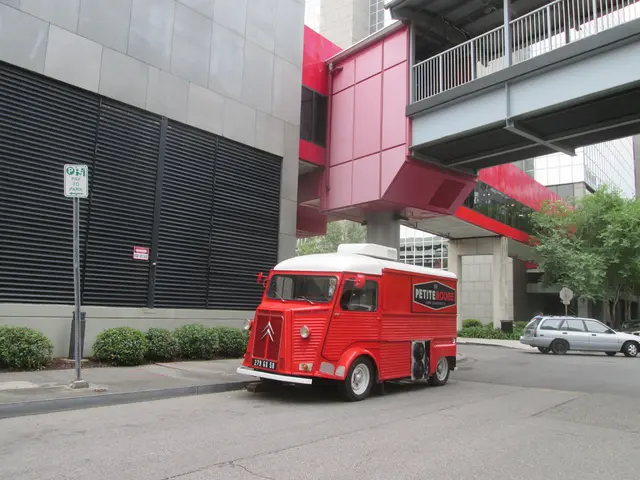Revised Volkswagen Tiguan exhibits improved performance and features.
If you're considering buying a second-generation Volkswagen Tiguan, paying attention to these potential issues during the TÜV inspection is crucial. Here's what you need to keep an eye on:
Quality Check
The second-gen Tiguan generally performs well in the first three TÜV evaluations. However, some common concerns include:- Chassis issues: Unlike the first generation, the Tiguan's chassis usually passes without issue. But keep an eye out for any unforeseen problems.- Oil loss: Occasionally, there might be oil loss, so make sure to check for any leaks under the hood.- Brake disc wear: TÜV inspectors often report increased brake disc wear, so it's essential to examine this aspect closely.
Body and Interior
The Tiguan II is longer by 6 cm, offering a good amount of space for both rows of seats. The trunk volume ranges from 600 to 1,655 liters, depending on the seat and seatback positions. For those needing more seating, the Allspace version offers up to seven seats and a larger trunk capacity.
According to TÜV findings, the Tiguan II benefits from the MQB modular transverse matrix technology components from the VW Group. MQB, short for Modular Transverse Matrix, is a flexible vehicle architecture used by the Volkswagen Group to standardize parts and streamline production across multiple models.
Engines and Drivetrain
The initial gasoline engine for the Tiguan II was a 1.4-liter four-cylinder with 125 and 150 PS. A 2.0-liter engine was also available in the 180 and 220 PS power stages. All-wheel drive was standard for these engines, with the 150 PS engine optionally available with 4x4 drive. In 2018, the gasoline engines were revised, introducing a new 1.5-liter four-cylinder engine with 130 and 150 PS. The top 2.0-liter engine received a slight power boost to 230 PS. The facelift introduced a plug-in hybrid with 245 PS and a new top version, the Tiguan R, with 320 PS.
The initial diesel engine was a 2.0-liter engine with 115 PS, with further power stages of 150, 190, and 240 PS also available. All engines, except the 115 PS engine, were either optionally or standardly equipped with all-wheel drive. The facelift simplified the diesel range, offering 122, 150, and 200 PS engines.
Equipment and Safety
Throughout its lifecycle, the Tiguan II was offered in lines like "Trendline", "Highline", and "Comfortline". After the facelift, the lines were renamed "Tiguan", "Life", "Elegance", and "R-Line". Individual options like a virtual cockpit and a trailer maneuvering assistant were also available. Post-facelift, the new infotainment generation based on the Modular Infotainment Matrix (MIB3) and an extended assistance system were offered.
When it comes to buying a used Tiguan II, there are around 8,000 models available on mobile.de, starting at approximately 11,000 euros. The success of the Tiguan II can be attributed to its subtle design, interior concept, and extensive engine range. To ensure you're making a sound investment, pay close attention to the TÜV inspection findings, focusing especially on engine performance, electrical and electronics, suspension and steering, brakes, body and paint, tires and wheels, and the exhaust system. With these areas covered, you'll be well on your way to enjoying your newly-purchased Tiguan II.
- The second-gen Tiguan, being part of the automotive industry, utilizes the Modular Transverse Matrix (MQB) technology, a shared component with other vehicles of heading 8703, enabling streamlined production within the Volkswagen Group.
- During the TÜV inspection, it's crucial to consider the financial implications of the Tiguan II's engine and drivetrain, such as the increased brake disc wear for transportation efficiency and the power boosts over its lifecycle, impacting its lifestyle and longevity.
- When budgeting for a used Tiguan II, factors such as ongoing maintenance costs (driven by TÜV findings and any potential issues) and insurance premiums (affected by safety features and equipment options like the trailer maneuvering assistant) should be carefully evaluated to ensure a sound investment in both the car and its associated financial burdens.








